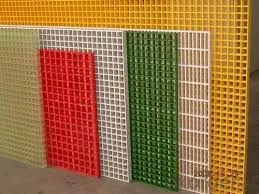
-
 Afrikaans
Afrikaans -
 Albanian
Albanian -
 Amharic
Amharic -
 Arabic
Arabic -
 Armenian
Armenian -
 Azerbaijani
Azerbaijani -
 Basque
Basque -
 Belarusian
Belarusian -
 Bengali
Bengali -
 Bosnian
Bosnian -
 Bulgarian
Bulgarian -
 Catalan
Catalan -
 Cebuano
Cebuano -
 China
China -
 China (Taiwan)
China (Taiwan) -
 Corsican
Corsican -
 Croatian
Croatian -
 Czech
Czech -
 Danish
Danish -
 Dutch
Dutch -
 English
English -
 Esperanto
Esperanto -
 Estonian
Estonian -
 Finnish
Finnish -
 French
French -
 Frisian
Frisian -
 Galician
Galician -
 Georgian
Georgian -
 German
German -
 Greek
Greek -
 Gujarati
Gujarati -
 Haitian Creole
Haitian Creole -
 hausa
hausa -
 hawaiian
hawaiian -
 Hebrew
Hebrew -
 Hindi
Hindi -
 Miao
Miao -
 Hungarian
Hungarian -
 Icelandic
Icelandic -
 igbo
igbo -
 Indonesian
Indonesian -
 irish
irish -
 Italian
Italian -
 Japanese
Japanese -
 Javanese
Javanese -
 Kannada
Kannada -
 kazakh
kazakh -
 Khmer
Khmer -
 Rwandese
Rwandese -
 Korean
Korean -
 Kurdish
Kurdish -
 Kyrgyz
Kyrgyz -
 Lao
Lao -
 Latin
Latin -
 Latvian
Latvian -
 Lithuanian
Lithuanian -
 Luxembourgish
Luxembourgish -
 Macedonian
Macedonian -
 Malgashi
Malgashi -
 Malay
Malay -
 Malayalam
Malayalam -
 Maltese
Maltese -
 Maori
Maori -
 Marathi
Marathi -
 Mongolian
Mongolian -
 Myanmar
Myanmar -
 Nepali
Nepali -
 Norwegian
Norwegian -
 Norwegian
Norwegian -
 Occitan
Occitan -
 Pashto
Pashto -
 Persian
Persian -
 Polish
Polish -
 Portuguese
Portuguese -
 Punjabi
Punjabi -
 Romanian
Romanian -
 Russian
Russian -
 Samoan
Samoan -
 Scottish Gaelic
Scottish Gaelic -
 Serbian
Serbian -
 Sesotho
Sesotho -
 Shona
Shona -
 Sindhi
Sindhi -
 Sinhala
Sinhala -
 Slovak
Slovak -
 Slovenian
Slovenian -
 Somali
Somali -
 Spanish
Spanish -
 Sundanese
Sundanese -
 Swahili
Swahili -
 Swedish
Swedish -
 Tagalog
Tagalog -
 Tajik
Tajik -
 Tamil
Tamil -
 Tatar
Tatar -
 Telugu
Telugu -
 Thai
Thai -
 Turkish
Turkish -
 Turkmen
Turkmen -
 Ukrainian
Ukrainian -
 Urdu
Urdu -
 Uighur
Uighur -
 Uzbek
Uzbek -
 Vietnamese
Vietnamese -
 Welsh
Welsh -
 Bantu
Bantu -
 Yiddish
Yiddish -
 Yoruba
Yoruba -
 Zulu
Zulu
Exploring the Capabilities and Features of GRP Shell for Enhanced Development and Customization
Understanding GRP Shell An Overview
GRP shell, short for Glass Reinforced Plastic shell, is a composite material that has gained prominence in various industries due to its excellent properties. This material is composed of a polymer matrix reinforced with glass fibers, providing enhanced durability, strength, and resistance to environmental factors. GRP shells are particularly valued in sectors such as construction, automotive, marine, and even in the manufacturing of consumer goods.
One of the most noteworthy characteristics of GRP shells is their lightweight nature. Compared to traditional materials like steel or concrete, GRP shells offer significant weight savings, which is crucial in applications where reducing overall mass is beneficial, such as in automotive and aerospace industries. This lightweight property not only improves fuel efficiency in vehicles but also makes handling and installation easier, subsequently reducing labor costs.
Understanding GRP Shell An Overview
The versatility of GRP shells cannot be overstated; they can be molded into a myriad of shapes and sizes, offering design flexibility that is often unattainable with other materials. This characteristic allows for intricate designs that are not only aesthetically pleasing but also functional, meeting the specific needs of various applications. In the construction industry, for instance, GRP can be used to create innovative designs for architectural elements, while in automotive design, it helps in crafting aerodynamic shapes that improve performance.
grp shell

Furthermore, GRP shells are excellent insulators. They exhibit low thermal conductivity, which is a critical property in applications requiring temperature control. This feature contributes to energy efficiency in buildings and vehicles, reducing the overall energy consumption associated with heating and cooling systems.
One area where GRP technology is making significant strides is in renewable energy. For instance, GRP is increasingly being used in the construction of wind turbine blades. The lightweight and durable nature of GRP shells enhances the efficiency of wind turbines and contributes to their longevity, thus playing a vital role in the push towards sustainable energy solutions.
However, while GRP shells come with numerous advantages, it’s essential to acknowledge the challenges they present. The production process can be resource-intensive, and the materials often used in GRP manufacturing can pose environmental concerns. Additionally, recycling GRP is complicated, which raises questions about sustainability in the long term. However, ongoing research is focused on improving the recyclability of GRP, striving to find sustainable solutions that align with global environmental goals.
In conclusion, GRP shells represent a groundbreaking advancement in materials science, combining strength, lightweight properties, and versatility. Their applications across diverse industries highlight their capability to meet modern engineering demands. As technology progresses and the importance of sustainability grows, GRP shells will likely evolve, becoming an even more integral component of our future infrastructures and products. The ongoing innovations in GRP technology promise to unlock even greater potential in various fields, reflecting a significant shift towards more efficient and eco-friendly materials.
Latest news
-
Oblate Tanks: Space-Saving, Durable Liquid Storage SolutionsNewsAug.27,2025
-
High-Performance Piping System Solutions for Industry & Commercial UseNewsAug.26,2025
-
Precision Fittings: Durable & Reliable Industrial & Plumbing SolutionsNewsAug.25,2025
-
Practical Steps: Unlock Success with Our Proven GuidesNewsAug.24,2025
-
Transport Tanks: Safe, Durable & Efficient Liquid HaulingNewsAug.23,2025
-
High-Quality Piping Systems for Efficient Flow & DurabilityNewsAug.22,2025









